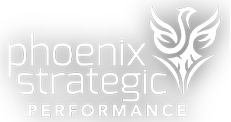You may have the right processes in place, and you may have your IT needs covered right now, but do you have all the right people in the right roles to position your IT organization for:
- Future organizational needs?
- Future technology needs?
- Future competitive advantage?
- Company growth acceleration?
- Maximum corporate profitability?
Background
IT organizations have grown so quickly over the past 3 decades, and in the grand organizational lifecycle, technology is a relatively new corporate discipline and is still evolving. In addition, IT organizations have grown very quickly, with increasing demands being placed on finite people and financial resources. IT is often considered a cost center rather than a strategic business growth center. The cost center perspective has put cost constraints and people pressures on IT at a time when demands are growing, as all organizations are becoming tech companies (Fortune Global Forum). We see that with all these conflicting demands and constraints, IT organizations are running just to stay in place, surviving rather than thriving, living under organizational yokes that are diametrically opposed to strategic business growth objectives.
Business Questions for IT Leaders
- Is it any wonder that, in the middle of all these conflicting needs, the IT people may have become stale in their skill sets?
- Has senior IT leadership taken the time to assess people for the ideal skills needed for today's and tomorrow’s jobs?
- When there are cost containment initiatives and headcount cuts in organizations (and there always are), do you think companies will invest money in developing IT people? If not, what are the consequences?
- What are the new skills/knowledge sets (skills) required for IT professionals to stay current, relevant, and strategic?
If we accept the data stating that profitable, sustainable organizations have the senior IT leader sitting at and fully participating in C-level planning conversations, what skills are needed for senior IT leadership? How far down into the organization do these skills need to descend? The data suggests that there are new skills that the most senior IT leadership must embrace, and many of these skills need to cascade far lower into the organization than ever before.
6 Skills for the Future IT Organization
1. Technical Skills: These are the basic, functional skills specific to each IT organization.
2. Business Acumen: The ability to fully understand the business, understand the competitive pressures from the outside marketplace, anticipate future threats from both the marketplace and general disrupters in the overall business landscape, convert the language of IT into the language of the business, and plan for solutions that drive positive business outcomes.
3. Change Leadership: 90% of change initiatives fail relative to desired outcomes. Understanding the elements required to effectively lead through the many interrelated layers of change is critical. Skipping one layer can be disastrous. Change is not a straight line from A to B. Change is not modification but introducing something that is completely new. This requires a thorough assessment of all the current to future:
- Processes
- Structures
- People
4. Organizational Dynamics: Understanding all the internal (IT) and external (client/constituents) processes, structures, and people dynamics that are ‘in play’ is an essential skill. These dynamics make up the operating landscape and will either help IT get things done or hinder or block forward progress. These dynamics are real and must be proactively managed for IT to become a business partner to their ‘client’ constituents.
5. Complex Communication: The ability to understand every element of communication needed to be a true business partner and to perform at the highest communication level. This requires a broad array of communication skills from marketing the IT message both internally and externally, influencing and principled negotiating, and client management skills of knowing your client, managing expectations, and delivering positive and negative information.
6. Risk Management and Critical Thinking: Every action has a reaction. Every decision IT makes will have a short, medium-, and long-term impact on the business. When managing scarce resources, critical decisions must be made that outline the risk impact and complex business consequences. IT has specialized expertise that must go through the risk management process and communicate their findings to the organization so that the organization can make critical, strategic decisions without compromising the IT function.
Are you looking to build the IT department of the future? Download the IT Competency Checklist to help you determine if your IT Department is ready to perform at sustainable peak levels for all necessary business skills in your organization.





